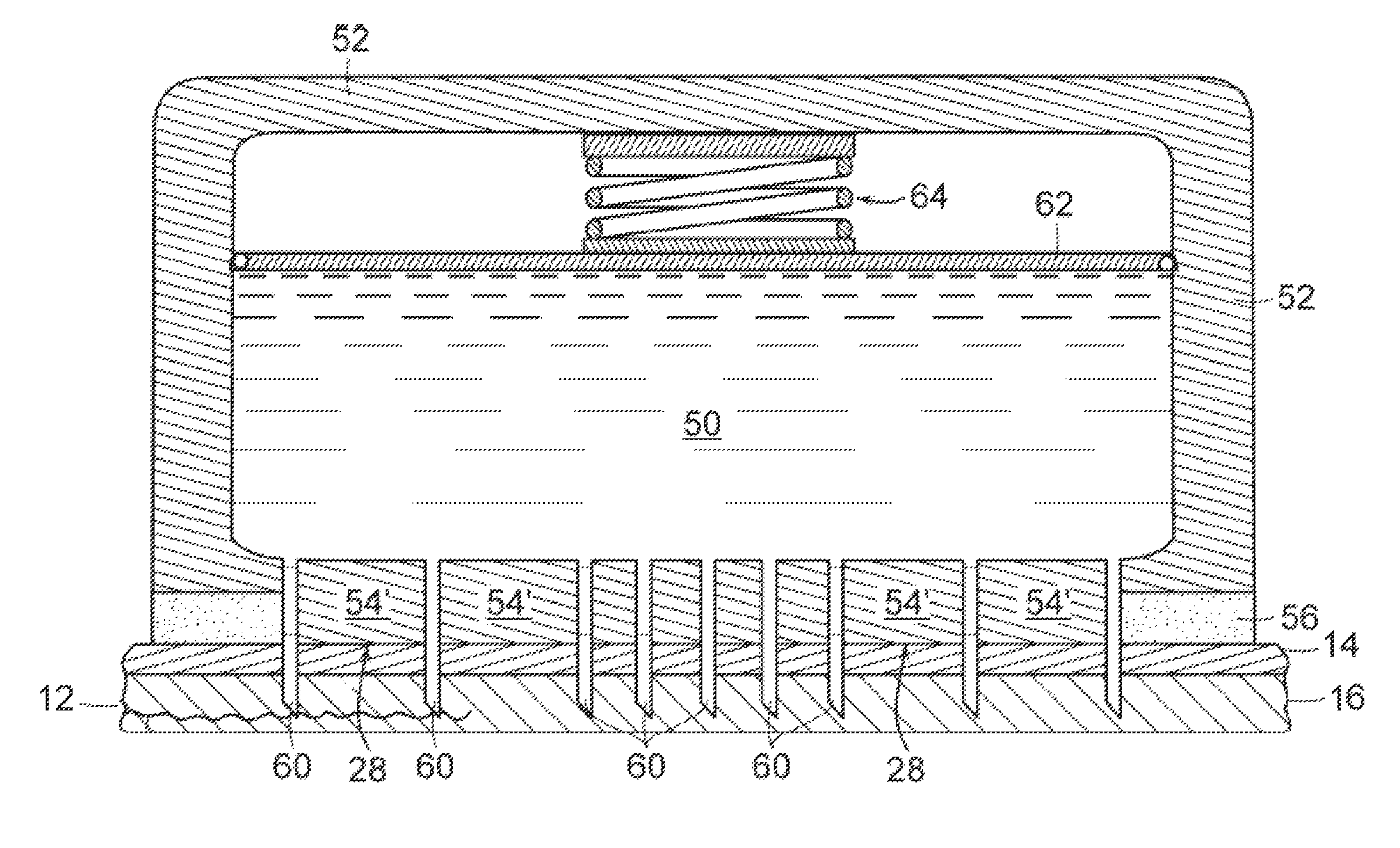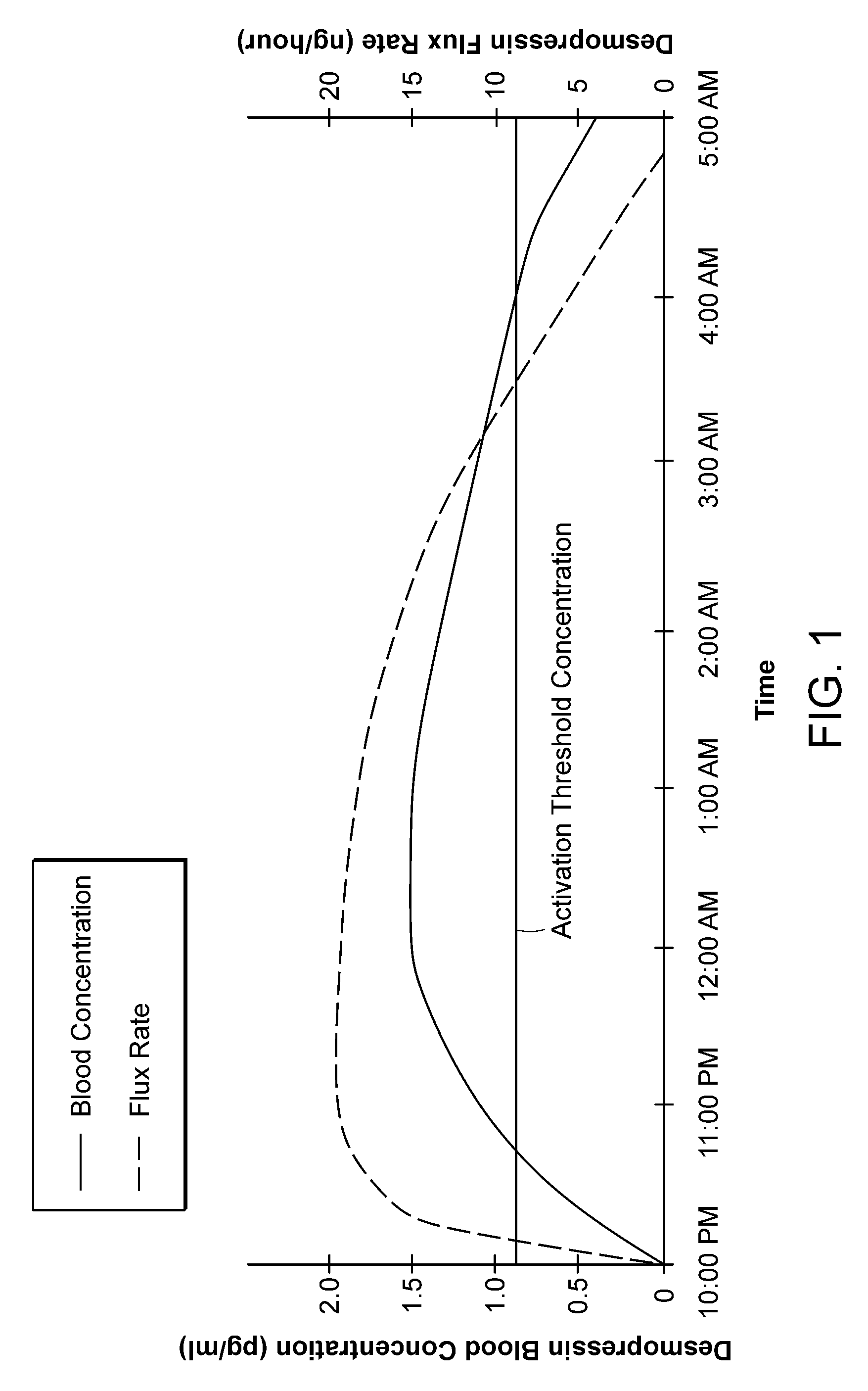Methods and devices for desmopressin drug delivery
a desmopressin and drug technology, applied in the field of medical devices, can solve the problems of complete or partial discontinuation of desmopressin delivery, achieve the effects of reducing urine production, avoiding undesirable side effects, and restoring normal urine production
- Summary
- Abstract
- Description
- Claims
- Application Information
AI Technical Summary
Benefits of technology
Problems solved by technology
Method used
Image
Examples
Embodiment Construction
[0035]For convenience, certain terms used in the specification and examples are set forth below.
[0036]“Treating”, includes any effect, e.g., lessening, reducing, modulating, or eliminating, that results in the improvement or modulation of the condition, disease, disorder, etc.
[0037]“Pharmaceutically or pharmacologically acceptable” include molecular entities and compositions that do not produce an adverse, allergic or other untoward reaction when administered to an animal, or a human, as appropriate. “Pharmaceutically acceptable carrier” includes any and all physiologically acceptable solvents, dispersion media, coatings, antibacterial and antifungal agents, isotonic and absorption delaying agents, preservatives, and the like.
[0038]The invention provides new solutions to the problem of treating patients for conditions characterized by overproduction of urine, inadequate urine concentration, low urine osmolality, or excessive frequency of urination, e.g., central diabetes insipidus, ...
PUM
| Property | Measurement | Unit |
|---|---|---|
| concentration | aaaaa | aaaaa |
| concentration | aaaaa | aaaaa |
| time | aaaaa | aaaaa |
Abstract
Description
Claims
Application Information
 Login to View More
Login to View More - R&D
- Intellectual Property
- Life Sciences
- Materials
- Tech Scout
- Unparalleled Data Quality
- Higher Quality Content
- 60% Fewer Hallucinations
Browse by: Latest US Patents, China's latest patents, Technical Efficacy Thesaurus, Application Domain, Technology Topic, Popular Technical Reports.
© 2025 PatSnap. All rights reserved.Legal|Privacy policy|Modern Slavery Act Transparency Statement|Sitemap|About US| Contact US: help@patsnap.com



